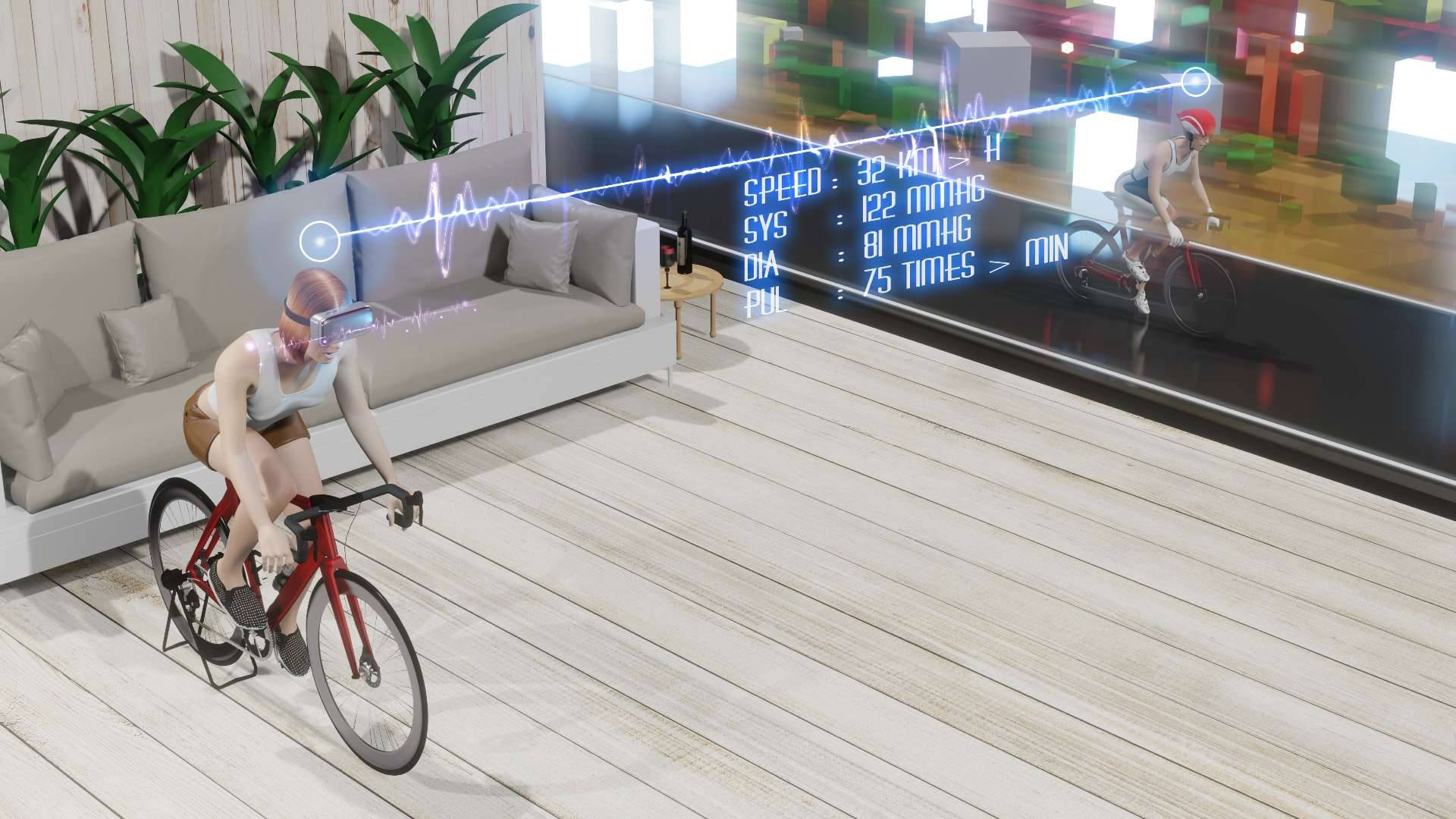
Healthy games in the METAVERSE
ARTICLES | Apr 22, 2022
Our first thought of the metaverse is likely a game. A game is an easy way to think of the metaverse as a universal form of entertainment familiar to all ages. Players can participate at many levels. They can be drawn in by the joy of success, by reward points, and by the thrill of achieving assignments or competing with others.
Healthy behavior in games is attracting more and more attention, through simulating exercise such as yoga, running, or cycling.
Game can also have rewards or penalties such as exercise or, which can be boost health and fun at the same time.
The global healthcare gamification market was estimated at $5,254.8 million in 2020 and is projected to soar to $47,114.6 million by 2027 with a 36.8% annual growth rate.
A popular example of a sport is cycling because it can be done alone with limited space, making it suitable for a game. Players can also enjoy beautiful virtual scenery as they compete.
Bike brands such as VirZOOM, Peloton, Xbox, Zwift, or the Muoverti TiltBike let players cycle indoors. Exercise can be combined with adventure through Smart TV or VR glasses.
Players can also choose to play alone or to compete with other players.
The global indoor cycling market was valued in 2019 at $630 million and is expected in 2021-26 to soar to $932.7 million with an annual growth rate of 5.7%.
Implications for the future:
- Single-player exercises such as running, cycling can be preferable to activities that require close supervision or team play for exercisers who like to stay in or wish to reduce their potential exposure to an epidemic.
- Governments may help companies develop fitness platforms to boost health.
Reference: https://bit.ly/3x62pjS, https://yhoo.it/3r958VV, https://bit.ly/3xbZZ3d, https://cnet.co/38pF9TD, https://bit.ly/3LKWVz0, https://bit.ly/3j5NRIZ
Want to know more about us, click www.futuretaleslab.com and https://www.blockdit.com/pages/6184ec3b07f0660cad.











